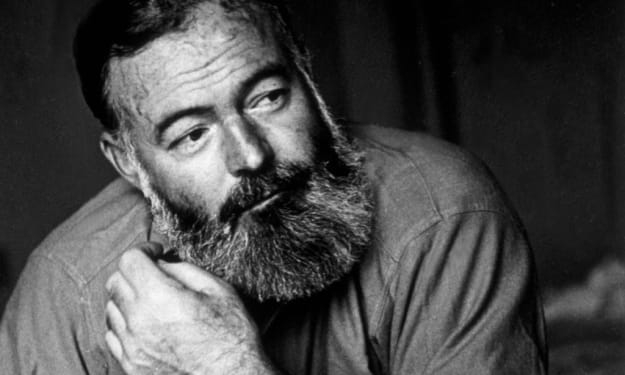A Filmmaker's Guide to: 20 Films of 1920s
100 Years of Innovation

The Jazz Age - as it is dubbed - was a decade of change in history. From the reparations in Europe for the end of the First World War to the decline and fall of the stock market in 1929 with the Wall Street Market Crash. Throughout the decade, we had entertainers such as Bing Crosby, Al Jolson, the orchestras of Artie Shaw and films of the strange and wild that were brewing in a new expressionist movement in Germany as a reaction towards the aching political regime in their country. Things were making it big. Cinema gained sound, the talkies were born and with one film - the whole scene would change forever.
"The Jazz Singer" caused a sensation when it was released in 1927 with its talking and sound embedded into the film, there wasn't a need for a live orchestra or even a recorded orchestra anymore. Things were fast-moving and innovating in the world of film and yet another something came along to push film into the top realm of entertainment: The Academy Awards.

"Wings" (1927) won the Best Picture Academy Award in 1928 at the very first Oscars - which wasn't actually broadcasted at all. Starring Clara Bow, also known as the 20s 'It Girl', the film dealt with the recent topic of the First World War and a turbulent love affair in its midst. Inspiring other sensational romance films such as "Gone with the Wind" (1939), "It Happened One Night" (1934) and many more. This threw the medium of film into the spotlight and held it under a microscope in order to see which film proved the best, biggest and most breathtaking piece of cinematic art of the year. And every year since, it has been an absolute pleasure to watch.

Directors came out left, right and centre to surpass their own efforts in the arts. The most iconic directors of the early twentieth century are not only part of the 20s era, but are also some of the most inspirational directors in all of cinema history. The works of the great F.W Murnau of the German Expressionist Movement caused an absolute uproar in igniting what is today horror cinema. Imitated later by the likes of Hitchcock and Kubrick, F.W Murnau perfected fear and terror with his symphony of "Nosferatu" (1922), a loose take on the Dracula story by Bram Stoker.

Another director rose from this era by the name of Fritz Lang. A man with a vision to create dark films of a politically charged nature, he is basically George Orwell for the cinema. With films under his belt such as the dystopian thriller "Metropolis" (1927) and a grand but dark film starring Peter Lorre, "M" (1931) - Fritz Lang began his incredible career in the 20s and showcased his talent as being that of geometrics and well-formed clever plot lines. The Weimar Era was truly the pinnacle of cinema for Germany because of such great innovations in the art coming to light.
20 Films of the 1920s

Let's now take a look at twenty films you should watch if you're planning on studying this great and innovative era. Each of these films has some significance or brilliance in its time and has impacted the entire culture of cinema after it. They have become symbols of the very beginning of the art form's invention and progress. Yes, there were films before the 20s but these are the films which pushed the barriers forward and thanks to them, we have been able to end up where we are today.
They are in no particular order:
1. Nosferatu (1922)
2. The Cabinet of Dr. Caligari (1920)
3. The Jazz Singer (1927)
4. Metropolis (1927)
5. The Kid (1921)
6. The Gold Rush (1925)
7. The Phantom of the Opera (1925)
8. The Phantom Carriage (1921)
9. Dr. Mabuse, the Gambler (1922)
10. Steamboat Willie (1928)
11. Man With a Movie Camera (1929)
12. Wings (1927)
13. The Golem (1920)
14. Pandora's Box (1929)
15. Safety Last! (1923)
16. The Passion of Joan of Arc (1928)
17. Way Down East (1920)
18. An Andalusian Dog (1929)
19. The Broadway Melody (1929)
20. Faust (1926)

As one of the most innovative and changing eras in cinema, I think it's important to remember that many of the directors of the Golden Age looked up to these filmmakers as icons as we look up to Golden Age directors today. If it had not have been for people like FW Murnau, Fritz Lang, Louise Brooks, Lillian Gish, Mary Pickford, Charlie Chaplin, Buster Keaton, Lon Chaney and many more, we possibly would not have at least half of the Hollywood Actors we had in the Golden Age and then, like a domino effect, not have the filmmakers, producers, composers, actors and actresses we have today. It is an amazing age to study and even though the lost film range is bigger than the ones we actually have to this day, there is so much to discover throughout the decade. There are many papers, books and essays, journals, articles and documentaries made about this era for the very reason that it was possibly the most important decade in all of film history. It gave us everything.
About the Creator
Annie Kapur
200K+ Reads on Vocal.
English Lecturer
🎓Literature & Writing (B.A)
🎓Film & Writing (M.A)
🎓Secondary English Education (PgDipEd) (QTS)
📍Birmingham, UK






Comments
There are no comments for this story
Be the first to respond and start the conversation.